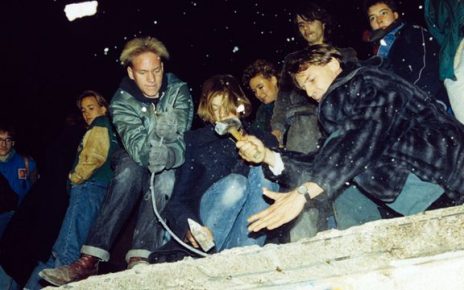Your abdomen, hips and buttocks will really tighten and firm when you use reverse planks.
Have months of reduced activity, stuck at home during the pandemic, taken its toll on your abdomen and hips? Unfortunately, you cannot hide your lower waist and hip shape in the summer like you can in the winter. Nevertheless, this might be just the opportunity you need to put the finishing touches on firming your entire waistline to salvage a great summer look for your core. Importantly, if you are committed to tightening your abs, you should raise the cardio plan in your workout to once or twice daily if possible, depending on your current fitness level, and eat a clean diet – because a flat midsection with visible abs are indeed made in the kitchen. That does not mean you need to live in the gym, as the second cardio piece could be a brisk 30- to 40-minute walk in the evening.
The best abdominal exercises to both strengthen your core and firm your waist shortens the fibers in the front and sides of the abdominal wall.1,2 The reverse plank is not a sophisticated exercise, and it needs no specialized equipment, so it is sometimes an ignored exercise for the core.3 However, it hits postural back muscles and even the gluteus maximus and hamstrings while also strongly engaging and shortening the muscles of the abdominal wall.
Muscles Used
The rectus abdominis is the primary anterior abdominal muscle that is activated in reverse planks. It has a distal attachment on the pubic bone and pubic crest pelvic bones of the hip girdle. Superiorly, each half of this muscle inserts into the xiphoid process at the lowest part of the sternum and cartilages of the fifth to seventh ribs near the sternum.4 When both halves contract, the rectus abdominis muscle pulls the trunk forward so that your head and chest will move closer to your hips.4,5 The reverse plank exercise activates both the upper and lower parts of this muscle very effectively.
The fibers of the external oblique muscle on the side of your waist are angled in the same direction that your fingers would point if you were to put your hands in your pockets.4 The internal oblique muscle sits just deep to the external oblique muscle and connects to the iliac bone of the hip. Its fibers run around the side of the trunk at right angles to the external oblique muscle and attach to the lowest three or four ribs.4 The external and internal oblique muscles are also activated by the trunk flexion and hip stabilization movements that are part of the reverse plank exercise.
Even your gluteus maximus muscle and hamstrings can be firmed by engaging in reverse planks. The gluteus maximus is the major hip extensor that attaches to the bones of the hip, the lumbar area of the lower back and the posterior part of the femur (thigh bone) at a section referred to as the gluteal line or gluteal tuberosity. When the torso is fixed and the hip joint is free to move, this muscle can extend the femur bone of the thigh. The gluteus maximus extends (straightens) the hip on the upward movement of the reverse plank.
The hamstring muscles provide part of the shape that accentuates firm glutes as well as providing the sweeping shape to your posterior thigh. The hip extension lift upward in the reverse plank is also assisted by the hamstring muscle, which is made up of the long head of the biceps femoris, semimembranosus and semitendinosus muscles. In general, these muscles attach to the hip, mostly at the ischial tuberosity, which is the bony part of your hip that you sit on when you are in a chair. The fibers in these muscles extend down the posterior side to attach either to the lateral side of the knee joint to attach to the fibula bone (and some ligaments) on the knee (long head of the biceps femoris) or medial side of the superior part of the tibia bone of the lower leg (semimembranosus and semitendinosus) just below the knee joint.
Reverse Planks
1. Sit on the floor with your hips flexed and with your legs extended in front of you, and your knees straight.
2. Put the palms of your hands on the floor and spread your fingers out for a good base of support. Lean backward so that your torso forms about a 45-degree angle with the floor. At this angle your hands should be behind your hip joints approximately straight down from your shoulders.
3. Support your weight on your heels and hands and lift your hips and body upward toward the ceiling.
4. Continue lifting until your torso, thighs and legs form a straight line.
5. Tighten your abdomen and pull in on your abdomen as you lift upward, with the idea that you are trying to pull your abdomen inward toward your spine.
6. Try to hold the straight line position beginning at 15 seconds and working up to 30 seconds.
7. Reverse the lift by flexing the hips and lowering them back to the floor.
8. As soon as your buttocks touch the floor, begin the next lift upward.
If your hips start to drop, rather than holding the straight line position, drop down, rest briefly, then start the next repetition. It is preferable to hold the straight line position for a shorter time than to attempt to lose the straight line and hold on for a longer period in an incorrect position.
The reverse plank exercise is effective but it is not terribly difficult to perform, especially once you get the feel of holding your body in a straight line. A lot of muscles are active, but your abdomen, hips and buttocks will really tighten and firm when you use reverse planks.6,7 If you increase the frequency of your cardio, and use reverse planks as part of your regular core and abdominal training (maybe even a few sets at home between workouts), the transformation to your new flat and firm abdomen and firmer gluteals will not only be ready for display this summer, it can also last throughout the year.
References:
1. Burden AM, Redmond CG: Abdominal and hip flexor muscle activity during 2 minutes of sit-ups and curl-ups. J Strength Cond Res 2013;27:2119-2128
2. Gottschall JS, Mills J, Hastings B: Integration core exercises elicit greater muscle activation than isolation exercises. J Strength Cond Res 2013;27:590-596.
3. Nolte K, Kruger PE, Els PS et al: Three dimensional musculoskeletal modelling of the abdominal crunch resistance training exercise. J Sports Sci 2013;31:264-275.
4. Moore, K.L. and A.F. Dalley. Clinically Orientated Anatomy. 4th Edition. Lippincott Williams & Wilkins, P.J. Kelly, Editor. Baltimore, Philadelphia. pp. 180-186, 1999.
5. Nelson GA, Bent-Forsythe DA, Roopchand-Martin SC: Electromyographic activity of the rectus abdominis during a traditional crunch and the basic jackknife exercise with the Ab Lounge. J Strength Cond Res 2012;26:1584-1588.
6. Maeo S, Takahashi T, Takai Y et al: Trunk muscle activities during abdominal bracing: comparison among muscles and exercises. J Sports Sci Med 2013;12:467-474.
7. Atkins S: Electromyographic response of global abdominal stabilisers in response to stable- and unstable-base isometric exercise. J Strength Cond Res 2014. [Epub ahead of print]: http://www.ncbi.nlm.nih.gov/pubmed/25546448?dopt=Citation
The post Get a Tight Core and Firm Waist first appeared on FitnessRX for Women.



